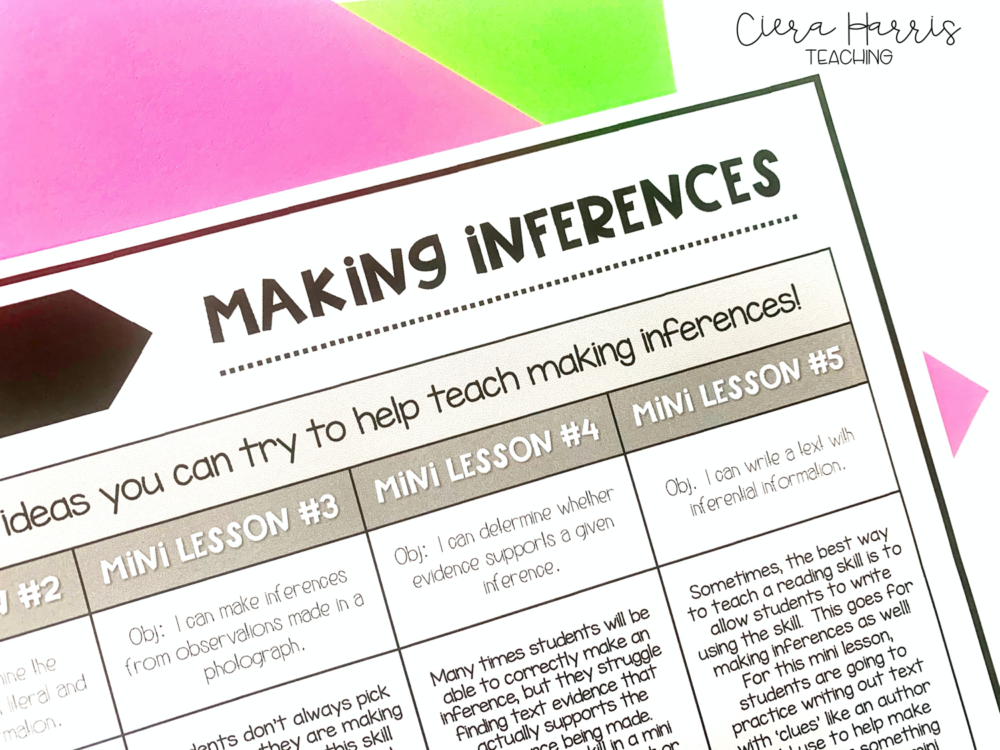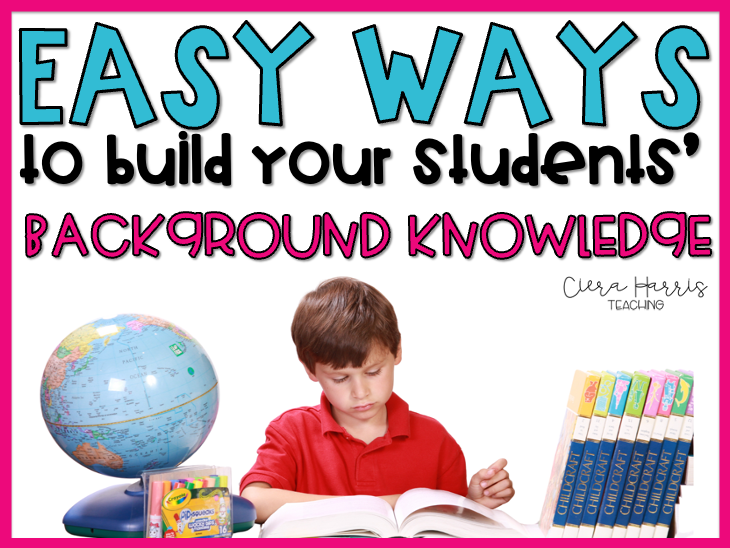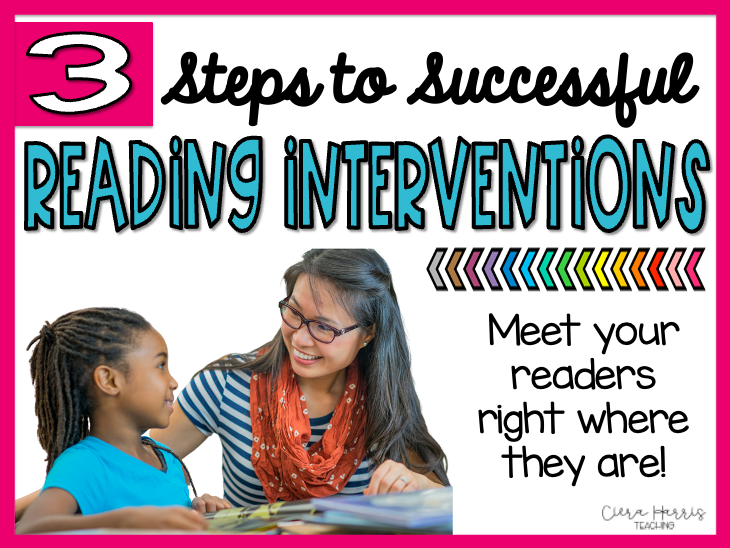One of the most important components of your reading block is the time spent on your mini-lessons! A teacher’s mini-lesson is their opportunity to focus on one specific objective, model the objective, and get the students actively thinking about the objective before becoming independent. Sometimes, thinking of new and unique ways to teach in a mini-lesson can bog you down. But don’t worry! I’ve got 5 new, fresh, and fun mini-lesson ideas on teaching making inferences!

Want to watch the video instead? Check it out below! Make sure to subscribe to get updates on all new content!
It might take a while for your scholars to catch onto making inferences. If once you get through these lessons you still are looking for ideas and interventions, make sure to read al about my 10 Minute Reading Interventions to help out!
Making Inferences Mini-Lesson #1:
Obj: I can explain why schema is so important when making inferences.
One of the pieces of making inferences that gets pushed aside is background knowledge. Students need to completely understand that without their schema, inferences won’t be able to be made at all. For this mini-lesson, come up with 6-10 sentences in which the students will have no background knowledge to access at all. Ask a question about each of the sentences and see what the student’s answers are. Discuss why they are struggling and what it has to do with making inferences. Some examples of topics you could write about are mortgage, taxes, remodeling, etc. Basically any ‘adult’ type situation!
Making Inferences Mini-Lesson #2:
Obj: I can determine the difference between literal and inferential information.
Many times, when we teach making inferences, we focus on just that side of thinking. When in fact, we need to give students the entire realm of possibilities. This means explaining to students that some information stated about a text is literal and some are inferential. For this mini-lesson, have a story prepared along with 10-15 sentences about the story. After reading the story, draw a T-Chart on the front board. Have the students read the sentences you wrote and sort them based on whether they give literal or inferential information about the story. Make them go back into the story to prove it.
Want to save all of these ideas for later? Snag this FREE printable to take with you! Just enter your home email address below!
Making Inferences Mini-Lesson #3:
Obj: I can make inferences from observations made in a photograph.
Students don’t always pick up on when they are making inferences. Help this skill become more black and white while using photographs. Head to Google and find 6-10 different photographs of people doing random things (swimming, talking, shopping, etc). One photograph at a time, place it on the front board and draw a T-Chart next to it. Label the chart ‘Observations’ and ‘Inferences”. First, have students walk through the photograph and write down what they see. Then have them focus on the other side and write out inferences they can make based on their observations. Repeat this with other photographs. Discuss how this is similar to making inferences when you read.
Making Inference Mini-Lesson #4:
Obj: I can determine whether the evidence supports a given inference.
Many times students will be able to correctly make an inference, but they struggle to find text evidence that supports the inference being made. Practice this skill in a mini-lesson! Prepare a text or story that allows ample opportunities for making inferences. Before the lesson, pull out those inferences and write them down as well as text evidence that does and does NOT support the inferences. Find about 10 inferences and make ½ of them have supporting text evidence and the other ½ have evidence that doesn’t support. As you read the story, stop and make the inferences with your students. Then show them the ‘evidence’ that you’ve chosen to support the inference. Discuss with students whether or not this evidence is correct.
Making Inference Mini-Lesson #5:
Obj. I can write a text with inferential information.
Sometimes, the best way to teach a reading skill is to allow students to write using the skill. This goes for making inferences as well! For this mini-lesson, students are going to practice writing out text with ‘clues’ like an author would use to help make readers infer something more. Focus your mini-lesson on character traits or feelings. Come up with a list of feelings/traits and for each one, guide students to write out a portion of text that they might find in a story where the author wanted them to infer that trait for feeling about the character. Once you write one, have them go back and figure out what ‘evidence’ they used and what schema they used to write this inferential information.
I hope these mini-lesson ideas are super helpful! Make sure to head back up to snag your free printable to you can have these ideas all in one place! Want to save this post for later? Make sure to pin the images below!








